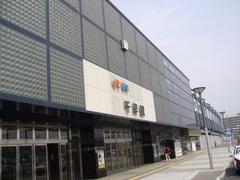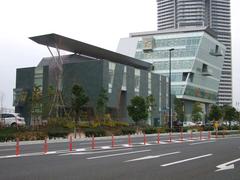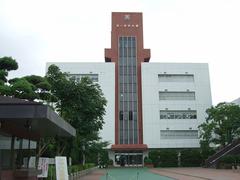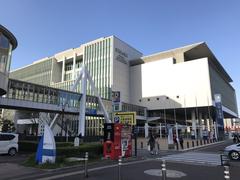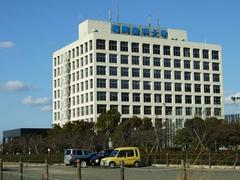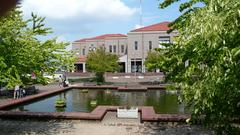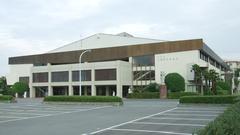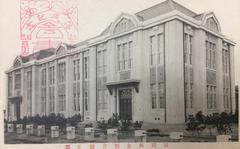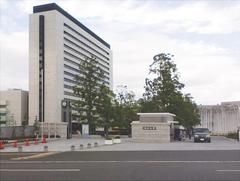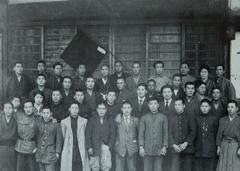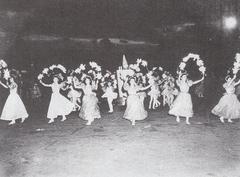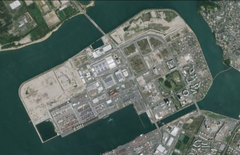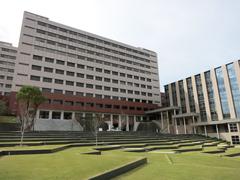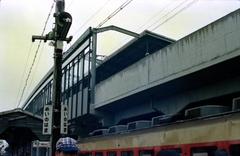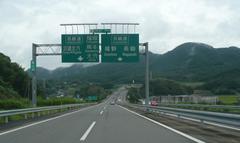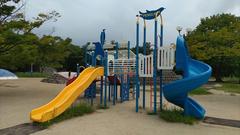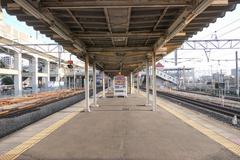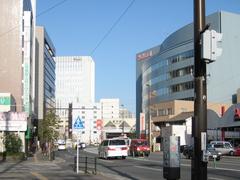Zasshonokuma Station Visiting Hours, Tickets, and Travel Guide – Fukuoka, Japan
Date: 04/07/2025
Introduction
Zasshonokuma Station (雑餉隈駅), nestled in Fukuoka City’s Minami Ward, serves as a pivotal gateway for travelers and commuters alike. Located just south of Hakata—the city’s commercial and historical core—this station is a key node on both the JR Kagoshima Main Line and the Nishitetsu Tenjin Ōmuta Line. Since its opening in 1890, Zasshonokuma Station has transformed from a suburban outpost into a modern transit hub, connecting visitors to Fukuoka’s renowned historical sites, vibrant neighborhoods, and broader Kyushu region (JR Kyushu Official Site; Fukuoka Tourism Board).
This guide provides detailed information on visiting hours, ticketing options (including IC cards such as Suica and nimoca), station amenities, and practical travel tips. Whether you’re a first-time visitor or a daily commuter, you will find all you need to navigate Zasshonokuma Station and explore the rich history and culture of the surrounding area (Nishitetsu Railways Official Site; Japan Guide: Fukuoka).
Table of Contents
- Introduction
- History and Regional Significance
- Station Modernization and Accessibility
- Station Layout and Amenities
- Transportation Network and Connectivity
- Visitor Information
- Nearby Attractions and Neighborhood Highlights
- Practical Travel Tips
- Frequently Asked Questions (FAQ)
- Visuals and Interactive Resources
- Preservation and Future Prospects
- Conclusion
- Official Sources
History and Regional Significance
Early Development
Zasshonokuma Station opened in 1890 amid a period of rapid urbanization in Fukuoka. Its strategic location just south of Hakata made it a vital link for commuters and freight, supporting the city’s expansion and connecting suburban communities with the urban center (JR Kyushu Official Site).
Role in Urban Growth
Following the 1889 merger of Fukuoka and Hakata, the station catalyzed the development of residential districts, schools, and local businesses. It integrated with bus lines and major roads, cementing its role as a regional transportation hub.
Wartime and Postwar Changes
During World War II, Zasshonokuma Station sustained damage but played a crucial role in military logistics and evacuations. Postwar reconstruction led to modernization efforts in the 1950s and 1960s, increasing capacity and improving facilities in response to Fukuoka’s urban growth.
Station Modernization and Accessibility
After the privatization of Japanese National Railways in 1987, Zasshonokuma Station underwent significant upgrades. Barrier-free access, modern ticketing systems, and expanded platforms now accommodate more than 10,000 daily passengers. The station meets Japan’s high standards for accessibility, with features such as elevators, tactile paving, and clear multilingual signage (Fukuoka Tourism Board).
Station Layout and Amenities
Zasshonokuma Station features a modern, user-friendly design:
- Platforms: Two island platforms serving four tracks, connected by a pedestrian overpass with elevators and escalators.
- Ticketing: Automated multilingual ticket machines and staffed counters supporting IC cards (Suica, nimoca, ICOCA).
- Amenities: Free Wi-Fi, clean restrooms, waiting areas, coin lockers, retail kiosks, and tourist information counters.
- Safety: CCTV surveillance, staff patrols, and emergency call buttons.
- Bilingual Signage: Clear directions in Japanese and English.
Transportation Network and Connectivity
The station offers direct access to key destinations:
- Hakata Station: Accessible in minutes, connecting travelers to Shinkansen and subway lines.
- Tenjin: Fukuoka’s commercial and entertainment district.
- Dazaifu Tenmangu Shrine: A renowned Shinto shrine, reachable via connecting trains and buses.
- Fukuoka Airport: Easily accessed via transfers at Hakata Station.
Well-integrated bus routes, bicycle parking, and taxi stands further enhance connectivity.
Visitor Information
Visiting Hours
- Station Operations: Daily, approximately 5:00 AM to midnight.
- Ticket Counters: Typically open from 6:00 AM to 10:00 PM.
Ticketing Options
- Automated Machines and Counters: Support cash, credit cards, and IC cards.
- IC Cards: Suica, nimoca, ICOCA, and others provide seamless travel across local trains and buses.
- Rail Passes: The JR Kyushu Rail Pass is ideal for regional travel; the Fukuoka Tourist City Pass offers unlimited rides on select lines and buses.
Accessibility
- Facilities: Elevators, ramps, tactile paving, accessible restrooms, and bilingual signage.
- Support: Staff provide assistance as needed during operating hours.
Amenities
- Luggage Storage: Coin-operated lockers.
- Retail and Food: Kiosks, convenience stores, and nearby eateries.
- Free Wi-Fi: Available within the station.
Nearby Attractions and Neighborhood Highlights
Zasshonokuma Station is more than a transport hub; it is a gateway to a vibrant local community and notable sites:
- Zasshonokuma Tenmangu Shrine: A historic Shinto shrine renowned for its seasonal festivals and traditional workshops (Fukuoka Heritage Week).
- Dazaifu Tenmangu Shrine: Accessible via connecting lines, this shrine is a must-see for history and culture enthusiasts.
- Local Markets and Shotengai: Explore traditional shopping streets and sample Fukuoka’s famous Hakata ramen, mentaiko, and seasonal sweets.
- Parks and Green Spaces: Minami Park offers walking trails and recreation; Ohori Park and Momochi Seaside Park are accessible by public transport.
- Cultural Events: Annual festivals, cherry blossom viewing, and artisan markets create a lively atmosphere.
Practical Travel Tips
- Navigation: Download Japan Transit Planner or Google Maps for real-time route planning.
- IC Cards: Purchase or recharge before entering the station for convenience.
- Luggage: Use station lockers for hands-free sightseeing.
- Etiquette: Queue orderly, maintain quiet on trains, and respect local customs.
- Weather: Dress appropriately for Fukuoka’s hot, humid summers and mild winters.
- Travel Updates: Note the new JESTA (Electronic Travel Authorization) requirement for visa-exempt travelers beginning in 2025.
Frequently Asked Questions (FAQ)
Q: What are Zasshonokuma Station’s operating hours?
A: The station operates daily from around 5:00 AM to midnight, with ticket counters generally open from 6:00 AM to 10:00 PM.
Q: Can I use IC cards at Zasshonokuma Station?
A: Yes, major IC cards (Suica, nimoca, ICOCA, etc.) are accepted.
Q: Is the station accessible for travelers with disabilities?
A: Elevators, tactile paving, and accessible restrooms are available throughout the station.
Q: Are there guided tours available?
A: While the station itself does not offer tours, the nearby Zasshonokuma Tenmangu Shrine and local tourism offices provide guided experiences.
Q: How do I reach Dazaifu Tenmangu Shrine from Zasshonokuma?
A: Transfer to the Nishitetsu Tenjin Ōmuta Line at Nishitetsu Zasshonokuma Station for a direct connection to Dazaifu.
Visuals and Interactive Resources
- JR Kyushu Official Site and Fukuoka Tourism Board offer up-to-date images and virtual tours.
- Maps and visuals of Zasshonokuma Station and surroundings can be accessed on official tourism websites.
- Look for high-quality photos with alt text such as “Zasshonokuma Station entrance”, “Station platforms”, or “Cherry blossoms near Zasshonokuma Station”.
Preservation and Future Prospects
Zasshonokuma Station continues to evolve, balancing the preservation of its historical legacy with ongoing modernization. Community engagement and sustainable urban development initiatives ensure the station remains a lively, accessible, and essential part of Fukuoka’s infrastructure.
Conclusion
Zasshonokuma Station is more than just a stop along your journey—it is a welcoming gateway to Fukuoka’s rich history, culture, and community spirit. With its modern facilities, strategic location, and vibrant neighborhood, the station offers both convenience and a unique local experience. Use this guide to plan your visit, explore surrounding attractions, and make the most of your time in Fukuoka.
For real-time updates, travel tips, and more, download the Audiala app and follow our social media channels.
Official Sources
- JR Kyushu Official Site
- Fukuoka Tourism Board
- Fukuoka Heritage Week
- Nishitetsu Railways Official Site
- Japan Guide: Fukuoka
- TM2JP Fukuoka Public Transport Guide
